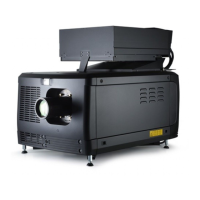Glossary
GLOSSARY
3G-SDI
Serial Digital I nterface (SDI) is a serial link standardized by I TU-R BT.656 and the S ociety of Motion P icture and Television Engineers
(SMPTE). SDI transmits uncompressed digital video over 75-ohm coaxial cable within studios, and is s een on mo st professional
video infrastructure equipment. The first revision of the standard, SM PTE 259M, w as defined to carry digital representation of analog
video such as NTSC and PAL over a serial interface and is more popularly known as standard-definition (SD) SDI. The data rate
required to transmit S D SDI is 270 Mbps. With the advent of high-definition (HD) video standards such as 1080i and 720p, the
interface was scaled to handle higher data rates of 1.485 Gbps. The 1.485-Gbps serial interface is commonly called th e HD SDI
interface and is defined by SMPTE 292M, using the s ame 75-ohm coaxial cable. Studios and other video production facilities have
invested heavily on the hardware infrastructure for coaxial cable and have a ve sted interest in extending the life of their infrastructure.
Fortunately, SMPTE recently ratified a new standard called SMPT E 424M that doubles the SDI data rates to 2.97 Gbps using the
same 75- ohm coaxial cable. This new s tandard, also called 3-Gbps (3G)-SDI, enables higher reso lution o f picture quality required
for 1080p and digital cinema.
DisplayPort
Digital display interface developed by the Video Electronics Standards Association (VESA) . T his royalty-free interface is primarily
used to connect a video s ource to a display device such as a computer monitor, though it can also be used to transmit audio, USB,
and other forms of data. VESA designed it to replace VG A, DVI, and FPD-Link. B ack ward compa tibility to VGA and DVI by u sing
active adapter dongles enables users to use DisplayPort fitted video sources without replacing existing display devices.
DVI
Digital Visual Interface is a display interface developed in response to the proliferation of digita l flat panel displays.
The digital video c onnectivity standard that was dev eloped by DDWG (Digital D isplay Work Group). This connection standard offers
two different connectors: one with 24 pins that handles digital video signals only, and one with 29 pins th at hand les both digital
and analog video. This standard uses T M DS (Transition Minimized Differential Signal) from Silicon Image and DDC (D isplay Data
Channel) from VESA (Video Electronics Standards Association).
DVI can be single or dual link.
HD
Hazard Distance (HD) is the distance me asured from the projec tion lens at which the intensity or the energy per surface unit becomes
lower than the applicable exposure limit on the
cornea or on the skin. The light beam is considered (to be) unsafe for exposure if
the distance from a person to the light source is less than the HD.
HDCP
High-bandwidth Digital Content Pro
tection is a form of digital copy protection developed by Intel Corporation to prevent copying of
digital audio a n d video content as it travels across Display Port, Digital Visual Interface (DVI), High-Definition Multimedia Interface
(HDMI), G igabit Video Interface (GVIF), or Unified Display Interface (UDI) connections, even if such copying would be permitted by
fair use laws. The specification
is prop rietary, and implementing HDCP requires a license.
HDMI
HDMI (High-Definition Multimedia Interface) is a compact audio/video interface for transferring uncompressed video data and com-
pressed/uncompressed digita
l audio data from a HDMI-compliant dev ice ("the source device") to a com patible computer monitor,
video projector, digital television, or digital audio dev ice. HDMI is a digital replacement for existing analog video standards.
RS232
An Electronic Industries Ass
ociation (EIA) serial digital interface standard specifying the characteristics of the communication path
between two device s using either D-SUB 9 pins or D-SU B 25 pins connectors. This standard is used for relatively short-range
communications and does not specify balanced co ntrol lines. RS-232 is a serial control standard with a set numb er of conductors,
data rate, word lengt
h and type of c onnector to be us ed. The standard specifies component connection standards w ith regard to
computer interface. It is also called RS-232-C, which is the third version of the RS-232 standard, and is functionally identical to the
CCITT V.24 standard. Logical ’0’ is > + 3V, Logical ’1’ is < - 3V. T he range between - 3V and +3V is the transition zone.
Scheimpflug principle
The "plane of sharp focus" can be changed so that any plane can be brought into sharp focus. When the DM D plane and lens plane
are parallel, the plane of sharp focus will also be parallel to these two planes. If, howev er, the lens plane is tilted with respect to the
DMD plane, the pl
ane of sharp focus will also be tilted according to geometrical and optical properties. The DMD plane, the principal
lens plane and the sharp focus plane will intersect in a line below the projector for downward lens tilt.
SMPTE
Society of Moti
on Picture and Telev ision Engineers - A global organization, based in the United States, that sets s tandards for
baseband visual comm unications. This includes film as we ll as video standards.
R5906753 DPXK BLP SERIES 20/11/2017
177

